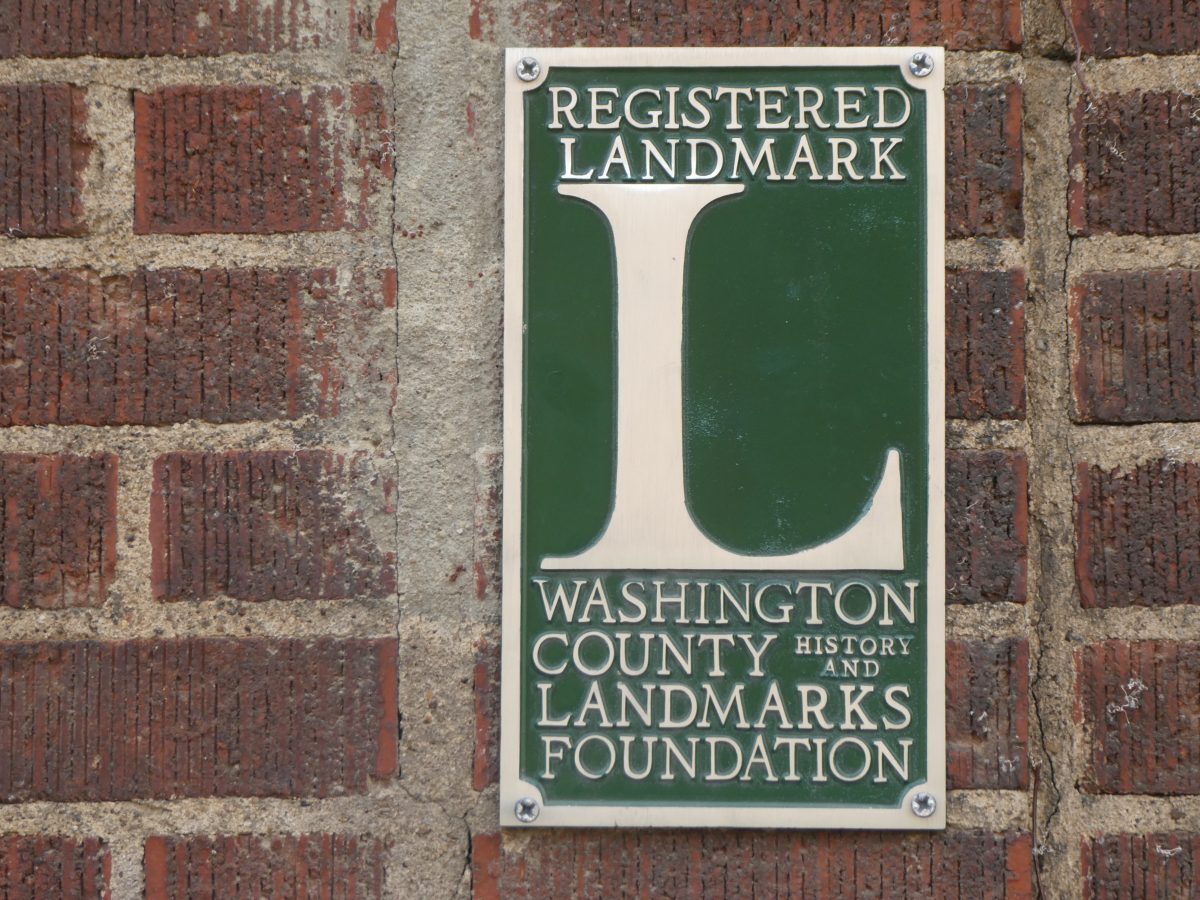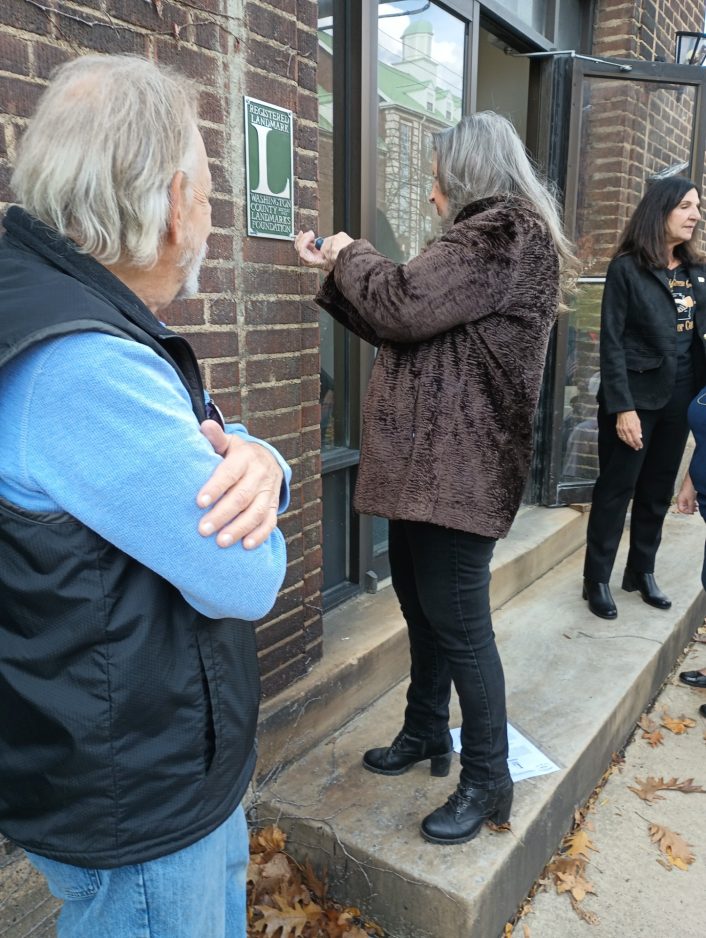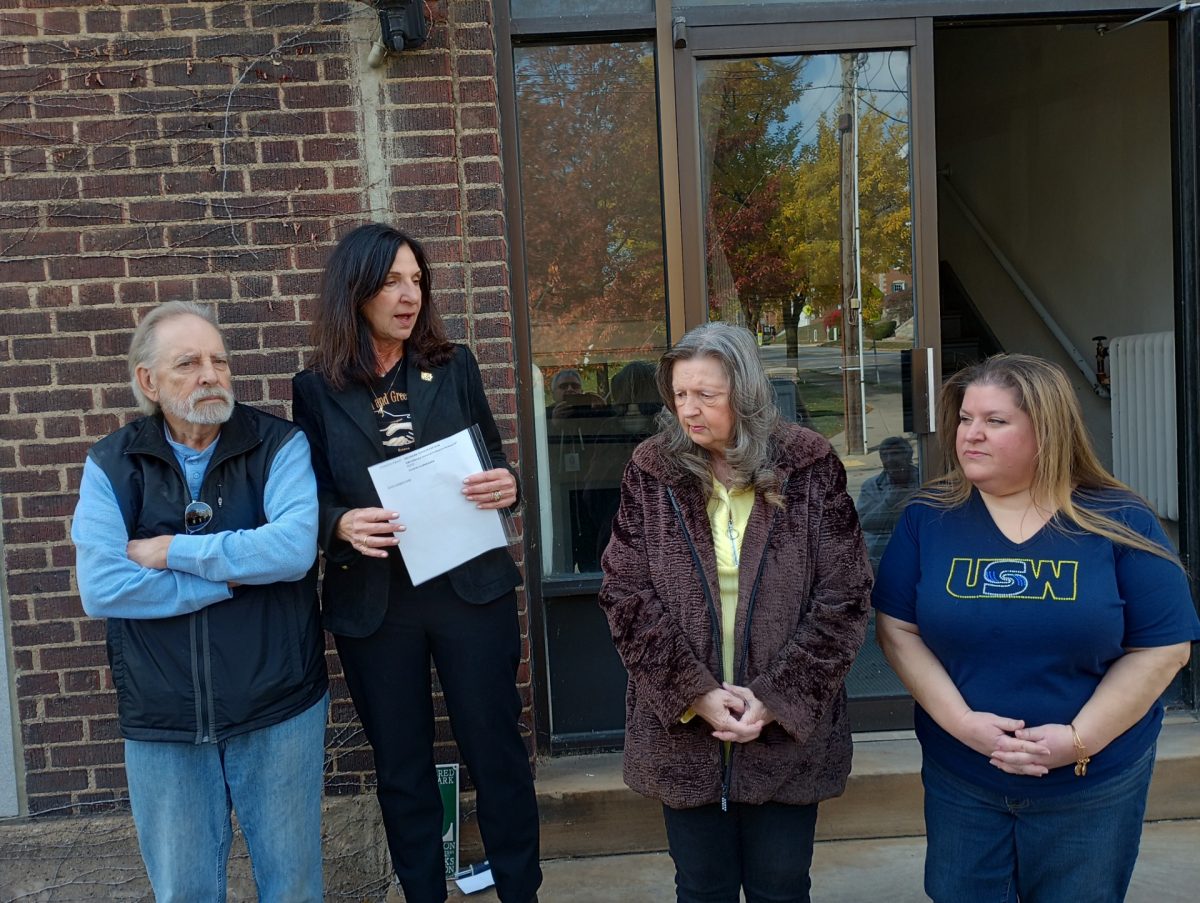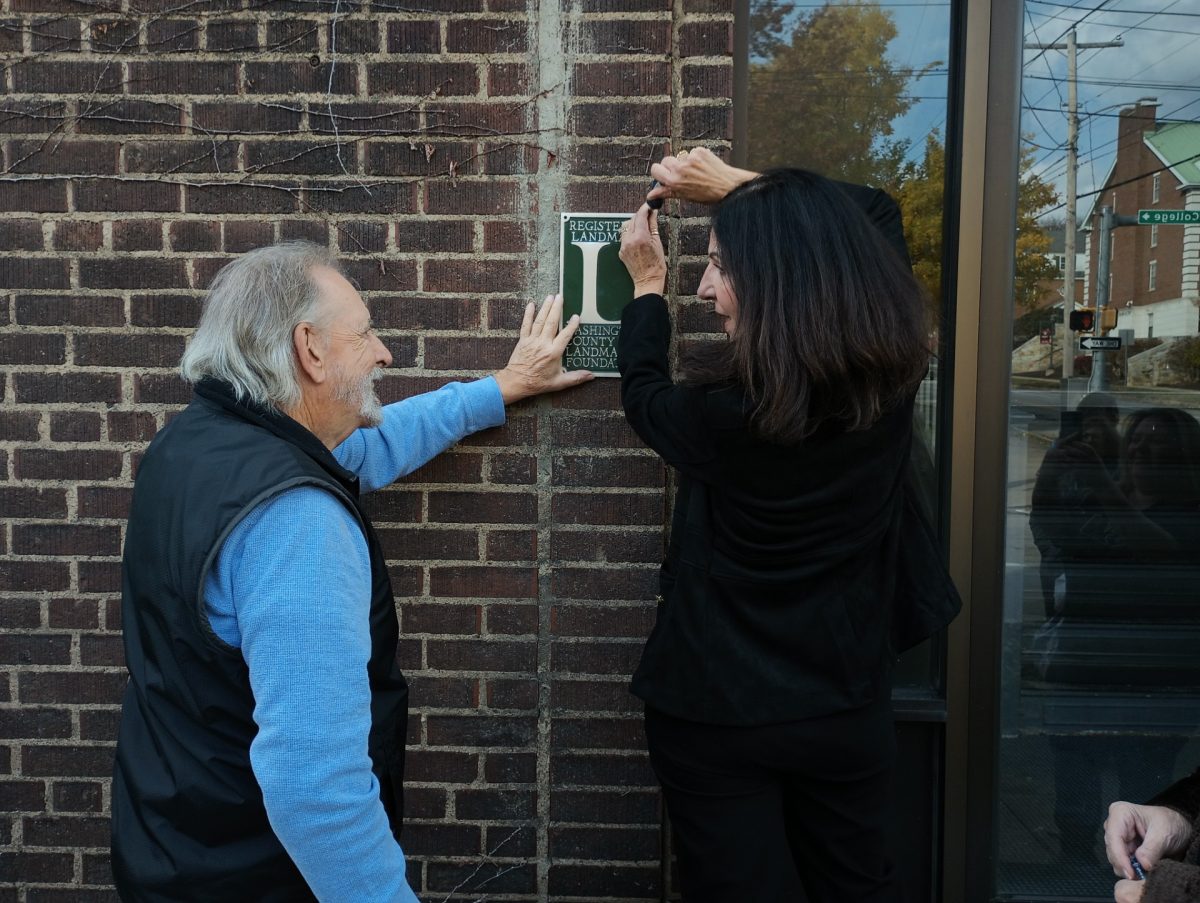Traded and Labor Building designated as historical landmark
The Trades and Labor Building in Washington has been designated as a Washington County Historical Landmark and a public dedication was held Saturday to celebrate that honor.
“This building is a testament to the rich labor history of Washington County,” said Donna Patrina, president of the Washington-Greene Central Labor Council, which is currently housed in the building. “We are thrilled to put our registered landmark on the building.I can’t begin to tell you what it means to me to have this building as a registered landmark in Washington. We’re trying to save the building. It’s old. It needs a lot of work. For the labor history in Washington County, this building is everything to us.”
The Washington-Greene Central Labor Council is one of nearly 500 state and local labor councils of the AFL-CIO.
The designation was declared by the Washington County Historical History and Landmark Foundation.
“We look at what went on in the building,” explained Sandy Mansmann, foundation president. “There’s people. There’s history. There’s events. It’s significant to that community for different reasons. We grade it on many different levels. This is really one of the first commercial buildings that we’ve done.”
Others have included the Washington County Courthouse and the Washington County Jail.
The Trades and Labor Building was constructed in 1920 and has served as a hub for labor union activity for more than eight decades.
Over the years several labor union offices were housed in the building at 1 South College St. such as teamsters, boilermakers, carpenters, utility workers and iron workers.
As part of the ceremony, the “L” landmark plaque was affixed to the building by the officers of the Washington-Greene Central Labor Council – Patrina, Wayne Watson, vice president; Kelly Watson, secretary, and Terri Boyce, treasurer.
“This designation marks a new chapter in our shared mission to honor the legacy of our sisters and brothers, and to ensure the spirit of labor continues to inspire future generations,” Patrina said.





